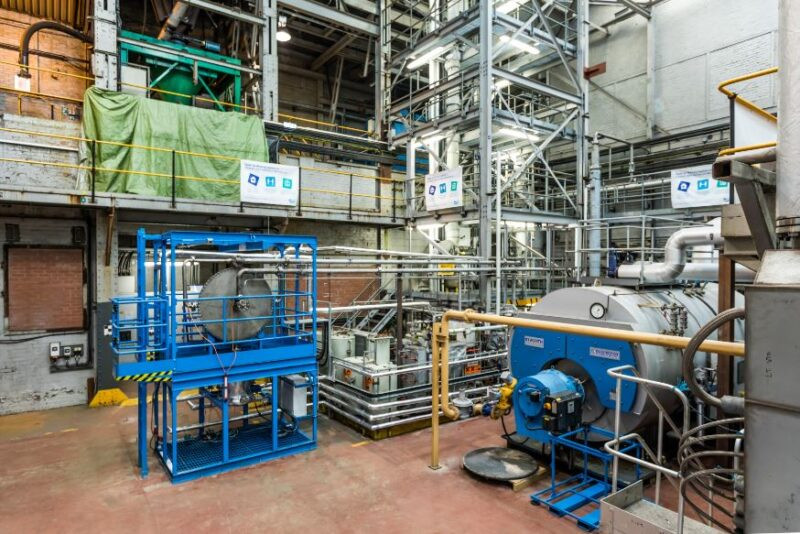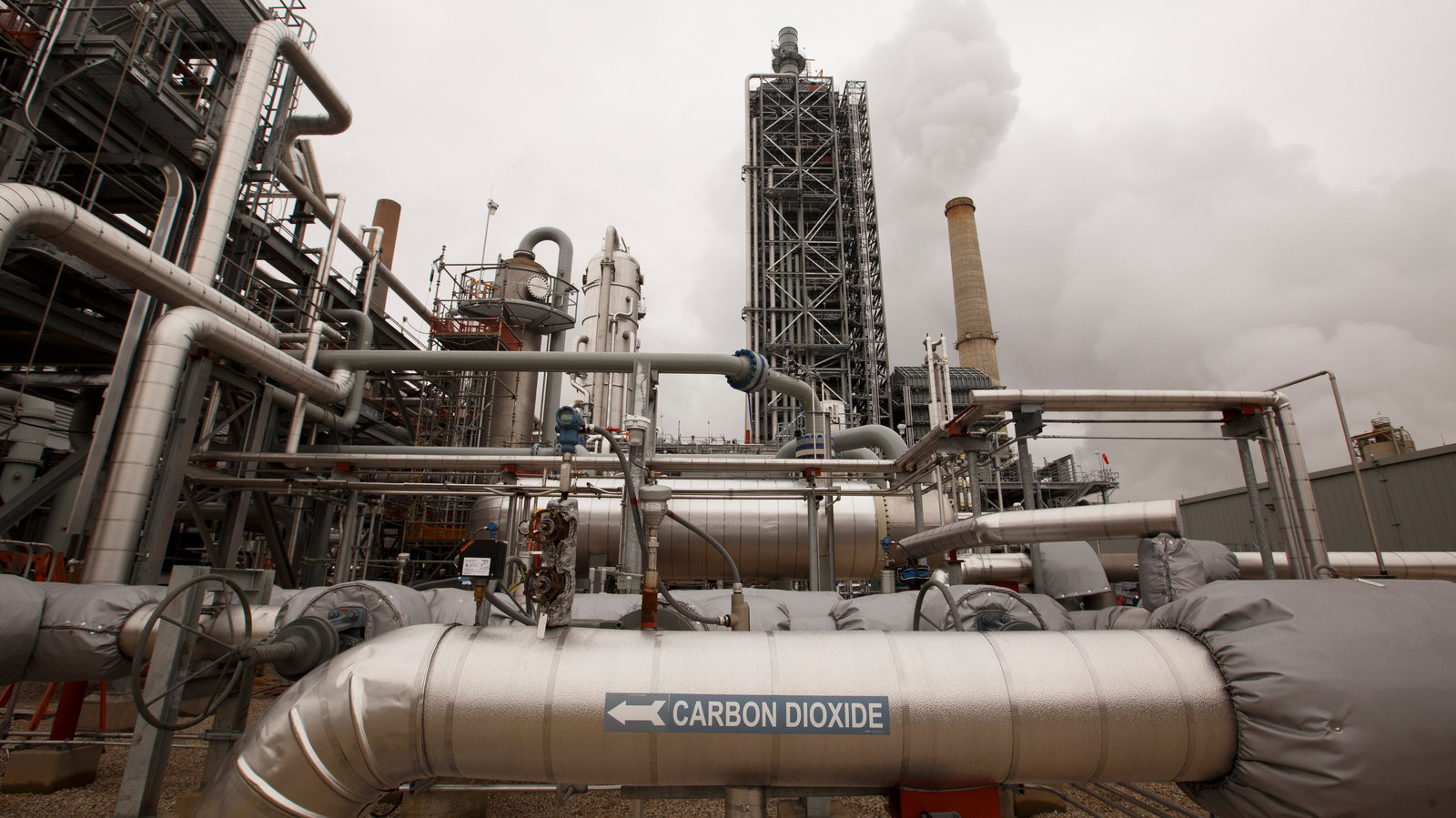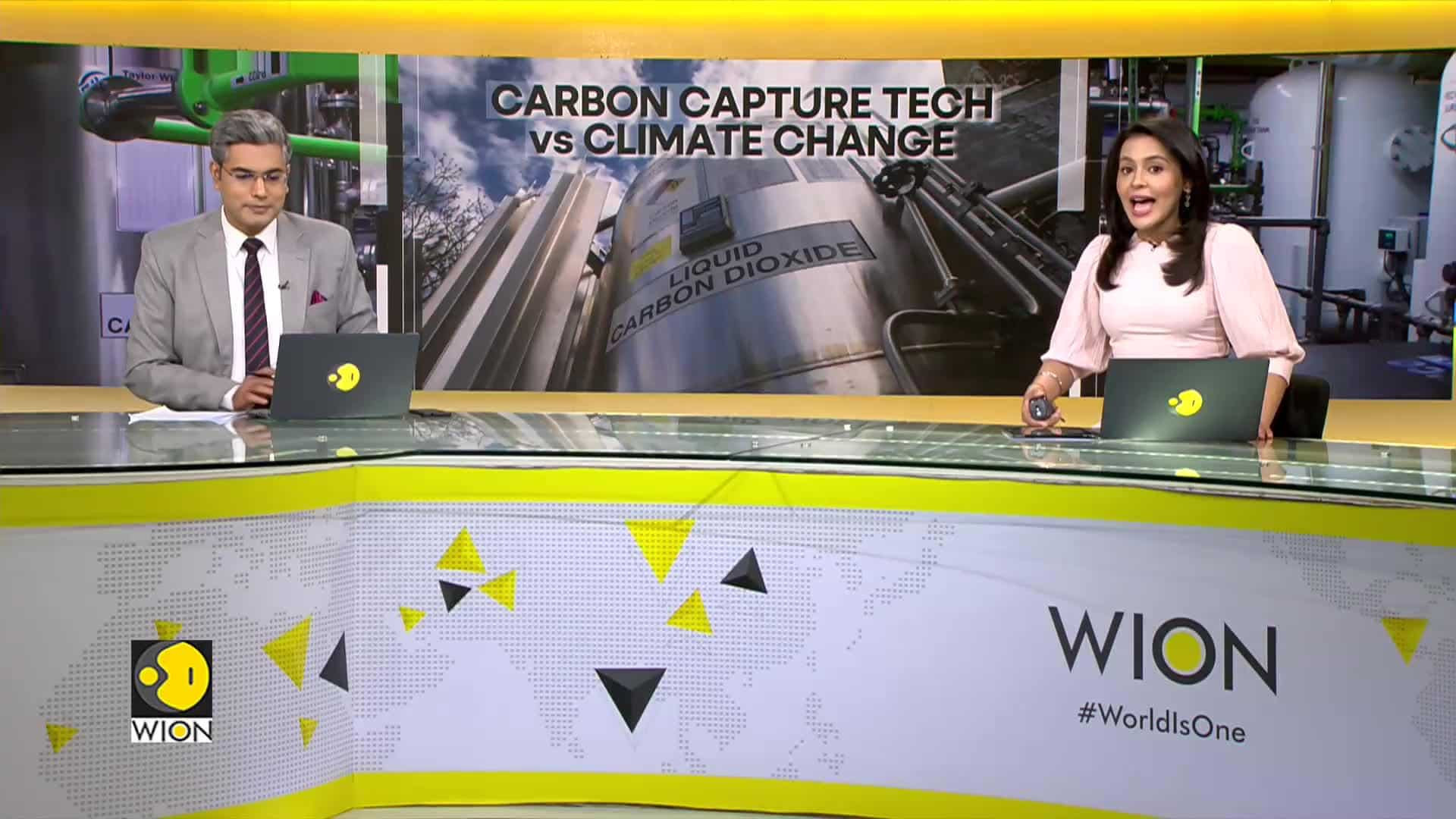Two Irish-based companies have announced improvements to their carbon capture tech, a polarising method to address the climate crisis. Carbon capture involves the removal of carbon dioxide from the atmosphere, either from specific sources such as power plants or directly from the air. Proponents believe that these methods can be used to maintain industrial production and economic growth while reducing emissions, but some climate experts have issues with these claims.
One Irish company working on this technology is NEG8 Carbon, a Waterford-based entity that has announced improvements to its direct air capture system. The company’s product captures C02 from the air so it can be stored underground or turned into carbon-neutral products such as sustainable aviation fuel.
Reducing Sorbents and Energy Consumption
NEG8 Carbon's upgraded Direct Air Capture (DAC) system operates by pulling in vast amounts of air and channeling it through advanced sorbent materials. These materials are specially engineered to attract and hold CO2 molecules on their surface as the ambient air flows through the DAC units. Once captured, the CO2 can be permanently and securely stored underground, preventing its release into the atmosphere. Alternatively, the captured CO2 can be converted into climate-neutral carbon products, such as sustainable aviation fuel, contributing to the reduction of carbon emissions and supporting the transition to a more sustainable energy future.
The company uses thick beds of sorbents – insoluble materials – to capture the carbon. NEG8 says its latest tech upgrade reduces the number of sorbents needed by 80pc. The company also claims its latest technology is more efficient, with its regeneration time reduced by 90pc and its energy consumption reduced by more than 20pc.
NEG8 Carbon's Breakthrough Innovation
NEG8 Carbon’s latest innovations center on a groundbreaking approach to deploying sorbents, the materials used for CO2 capture. Traditionally, sorbents are packed into thick beds, necessitating large quantities for effective performance. However, NEG8 Carbon’s new method reduces the required amount of sorbent by 80%. This innovation not only conserves materials but also accelerates the CO2 capture and release process, slashing regeneration time by 90%. The result is a significantly more efficient and streamlined system, enhancing the overall effectiveness of carbon capture technology.
Another major innovation in NEG8 Carbon’s DAC system enhances the heat exchange process. This advancement significantly speeds up heat transfer to the sorbent material, optimizing its regeneration and boosting CO2 uptake by 50%. Additionally, this improved process reduces energy consumption by over 20%, making the DAC system not only more efficient but also more cost-effective and environmentally friendly.
“As the global community strives to combat climate change, reducing carbon emissions is important, but it is only part of the solution,” said NEG8 CTO Dr John Breen. “Equally important is removing existing carbon dioxide from the atmosphere.
“Direct Air Capture technology plays a crucial role in this effort by capturing CO2 directly from the air, offering a scalable solution to help meet global net-zero targets.”
Scaling Up and Demonstrating Effectiveness
The company plans to create a demonstration unit in a real-world setting that showcases these latest improvements by the third quarter of 2024. Aligned with its ambitious mission, NEG8 Carbon remains steadfast in its commitment to capturing 100 million tonnes of CO2 annually by 2050.
After successfully launching Ireland’s first operational direct air capture (DAC) system in 2023, the NEG8 Carbon team is set to manufacture and test a large-scale pilot system throughout 2024 in collaboration with Deep Sky in Canada. A partnership with Walton Institute this year focuses on a two-year AI project using machine learning to monitor and optimise the conditions for carbon capture.
The innovation announced today brings NEG8 Carbon one step closer towards that goal, positioning the company to meet the global demand for effective and scalable carbon removal systems as governments and corporations intensify their efforts to reach net zero emissions.
Mechanical Trees: A New Approach to Carbon Capture
Another Irish-based company that has announced an improvement to its carbon-capture tech is Carbon Collect. This company unveiled a commercial-scale ‘mechanical tree’ in 2022 as a way to capture CO2 from the atmosphere.
The company said that year that its device was up to 1,000 times more efficient than a natural tree at removing CO2 from the air. Now, it is working on the second generation of this device and claims this will capture significantly more C02 at a reduced operating cost.
Carbon Collect’s Second-Generation MechanicalTree
According to Carbon Collect, its technology mimics the natural process of photosynthesis, where trees absorb CO2 from the air, but in a manner that uses engineered materials and processes. The company states that these processes build upon the system’s original design by capturing more CO2 per unit of energy due to advancements in sorbent materials and regeneration technology.
The modular design of the system allows multiple units to be deployed together in clusters, or ‘carbon farms’, which can scale up to capture large amounts of CO2. “It represents a major milestone not just for Carbon Collect, but for the entire DAC industry,” he added.
The MechanicalTree design works by extending vertically to ten metres, becoming saturated with CO2 from ambient air delivered by wind. The column is then lowered into the regeneration chamber before captured CO2 is released and processed.
The company also claims that the system helps to reduce costs of DAC, a method which has been highly criticised for its high costs. As of recent estimates, its cost ranges between $250 to $600 per metric tonnes of CO2 captured. This variation is due to differences in the efficiency of the technology, the energy requirements and economies of scale.
By reducing costs, Carbon Collect states that it is now closer to its target of reducing carbon capture costs to under $200 per tonne by 2030. The first Gen-II MechanicalTree will be installed by late 2024, with commercial deployments starting in 2025.
Global Deployment and Industry Recognition
Carbon Collect plans early deployments across the US, Europe and other regions, including a key role in the Southwest Regional Direct Air Capture Hub, funded by the US Department of Energy, to showcase the technology’s scalability and support its market expansion. Mike Austell, Vice President of Engineering at Carbon Collect, highlighted the significance of these advancements: “This technology is the culmination of decades of research and development. The improvements we have made with the Gen-II MechanicalTree are not just incremental; they are transformative, setting a new standard for the industry.”
The Challenges and Future of DAC
The DAC process is energy-intensive and costly, primarily because CO2 is only a small fraction of the air, making capture less efficient. Current DAC technologies can capture up to 90-100% of CO2 from processed air, but their overall impact is limited by the small scale of existing facilities.
For example, Climeworks’ Orca plant in Iceland, one of the largest operational DAC plants, captures about 4,000 tons of CO2 annually—a fraction of the billions of tons needed to make a global impact. With the high cost limiting its widespread adoption, DAC and its effectiveness depends on using renewable energy to power the process and ensure permanent storage or utilisation of the captured CO2. To address these challenges, governments are stepping in. The US Department of Energy has launched initiatives like the Carbon Negative Shot, aiming to reduce DAC costs to below $100 per ton by 2030 and scale up the technology. The European Union has made DAC a key component of its broader climate strategy, particularly through the European Green Deal, which aims to achieve carbon neutrality by 2050.
Will DAC be the Solution to Climate Change?
One key example of an EU initiative is the Horizon Europe programme, which funds research and development in DAC and other carbon removal technologies. The European Innovation Council (EIC) has also provided funding to companies like Climeworks to scale up their DAC operations. While these new advancements in carbon capture technology are promising, it is important to consider their limitations and the potential challenges they face in being widely adopted and scaled to effectively combat climate change. Only time will tell whether these advancements will lead to a significant shift in the fight against climate change, but the progress made by NEG8 Carbon and Carbon Collect suggests a potential future for this critical technology.



















